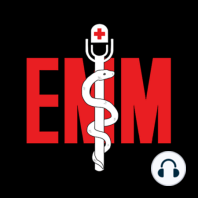2 min listen
Podcast 557: COVID-19 Lab Trends
ratings:
Length:
7 minutes
Released:
Apr 29, 2020
Format:
Podcast episode
Description
Contributor: Don Stader, MD Educational Pearls: COVID-19 is diagnosed with a nasopharyngeal swab (q-tip). This unfortunately can be painful, but if the swab doesn’t go deep into the nasal cavity the sample can be inadequate leading to false negatives (missed infections). The sensitivity of the COVID-19 RT PCR test is low, ranging from 66-80% in various studies. Another study has shown 23% of patients who initially tested negative but had COVID-19 symptoms will test positive when re-tested. So test highly suspicious patients twice. COVID has shown to have an effect on CBC. White blood cell counts are often normal (no leukocytosis), but there is often lymphopenia, or low lymphocytes, and thrombocytopenia. Interestingly, low platelets have appeared to have prognostic value in that lower platelets often indicate worse patient outcomes. Coagulation studies are showing very elevated D-Dimers which has sparked the debate as to whether COVID-19 causes a hypercoagulable state. The increased incidence of MI/heart attacks and strokes in COVID patients supports this argument. While D-Dimers can help point towards a diagnosis of pulmonary embolism, in the setting of highly likely COVID-19 infections, getting a CTA looking for a PE is probably unnecessary unless there’s also suspicion for PE. C-reactive protein (CRP) and procalcitonin are two common inflammatory markers. A CRP can help indicate how sick a patient is and procalcitonin can help determine if the infection is bacterial or viral in nature. CRP levels are often elevated in COVID patients, and studies are showing a high CRP is linked to worse patient outcomes. Elevations in procalcitonin can be used to see if there’s a concomitant bacterial infection, meaning patients need antibiotics in addition to supportive care for the COVID-19. Flu season is coming to a close, but data has shown a 5-10% co-infection rate of COVID-19 with influenza. As expected patient outcomes have been worse in those with both infections. References 1) Farkas, Josh. “COVID-19.” EMCrit Project, 21 Apr. 2020, emcrit.org/ibcc/covid19/#labs. 2) Guan W. et al. Clinical Characteristics of Coronavirus Disease 2019 in China. February 28, 2020, updated on March 6, 2020, at NEJM.org. DOI: 10.1056/NEJMoa2002032 3)Young BE, Ong SWX, Kalimuddin S, et al. Epidemiologic Features and Clinical Course of Patients Infected With SARS-CoV-2 in Singapore. JAMA. 2020;323(15):1488–1494. doi:10.1001/jama.2020.3204 4) Wang M. et al. Clinical diagnosis of 8274 samples with 2019-novel coronavirus in Wuhan. medRxiv 2020.02.12.20022327; doi: https://doi.org/10.1101/2020.02.12.20022327 Summarized by Jackson Roos, MS4 | Edited by Erik Verzemnieks, MD
Released:
Apr 29, 2020
Format:
Podcast episode
Titles in the series (100)
REBOA: Introduction of the use of REBOA for hemorrhagic shock. by Emergency Medical Minute
